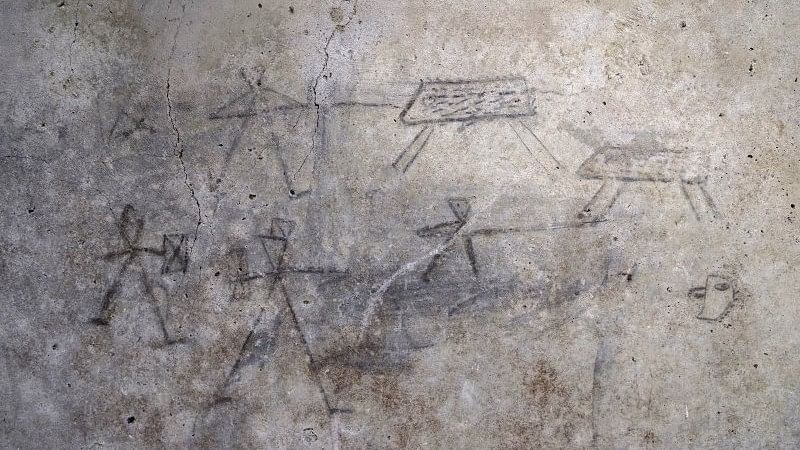
Charcoal sketches of gladiators and hunters drawn by children in ancient Rome discovered on the walls of a service courtyard, in the house of the colonnaded Cenacle on Via dell'Abbondanza in Pompeii.
Credit: X/@pompeii_sites
Rome: Archaeologists in the ancient Roman city of Pompeii near the city of Naples have uncovered charcoal sketches drawn by children as young as six years old, depicting possibly violent fights they may have witnessed.
The sketches of gladiator stick figures were discovered during excavations in recent months in Pompeii, a once-thriving city that was destroyed when Mount Vesuvius erupted nearly 2,000 years ago.
Archaeologists also found the outlines of three small hands, two figures playing with a ball, a hunting scene possibly featuring a boar, and two fighters, one of whom is lying flat on the ground.
The director of the site, Gabriel Zuchtriegel, said the naive line drawings, found on the wall of a house known as the "Colonnaded Cenacle", were probably done by children aged six or seven.
Psychologists from the Federico II University in Naples believed the sketches depicted events the children had witnessed, rather than imagined, he said.
"In Pompeii, even young children were exposed to extreme violence between humans and between humans and animals in the sands of the ancient city's amphitheatre", Zuchtriegel said.
Other discoveries this week included a unique portrait of a hooded child with a small dog at his feet, found in the so-called "House of the Painters at Work".
At the entrance of that house, the skeletons of a man and a woman were discovered, an elderly couple that had probably sought refuge in vain from the pumice and ash that rapidly overwhelmed the city during the volcanic eruption.
Last month, authorities in Pompeii revealed a black-walled dining hall with paintings inspired by the Trojan War, while in March, a building site was unearthed that shed light on ancient construction techniques.